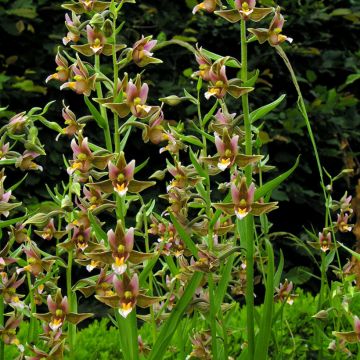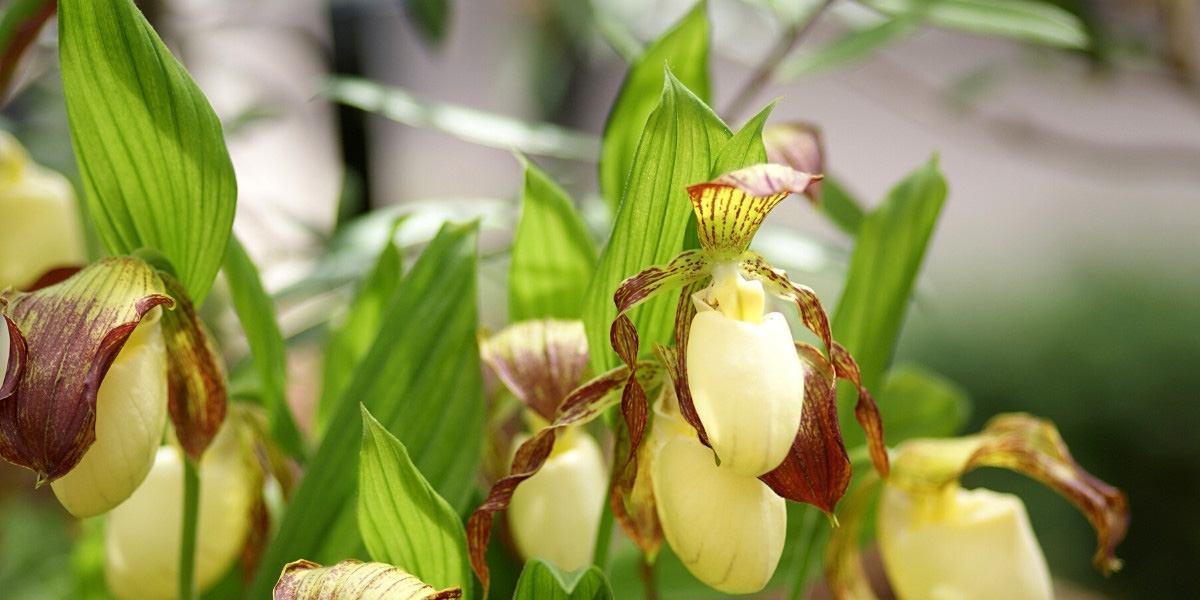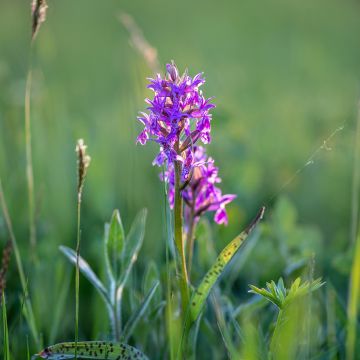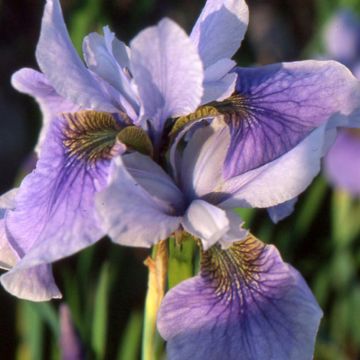

Cypripedium parviflorum var. pubescens - Lady Slipper Orchid
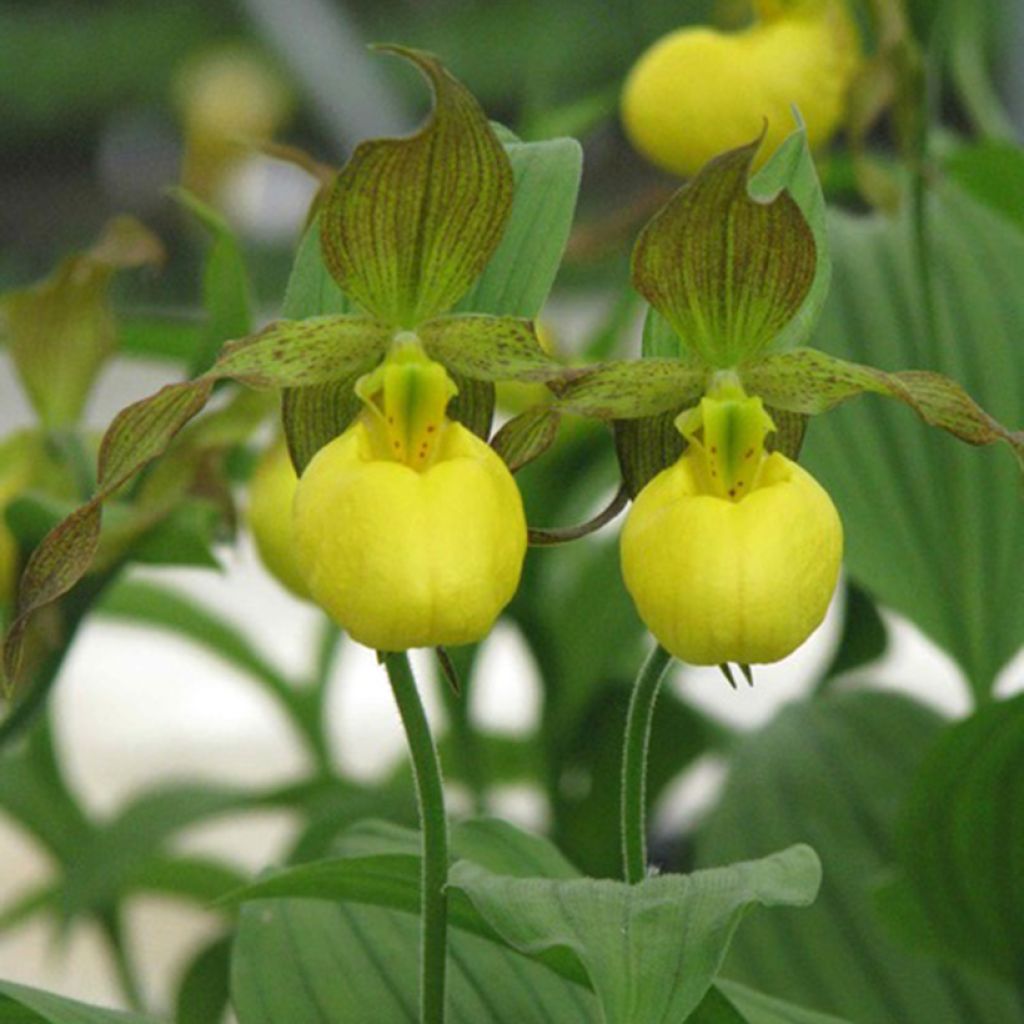

Cypripedium parviflorum var. pubescens - Lady Slipper Orchid
Cypripedium parviflorum var. pubescens - Lady Slipper Orchid
Cypripedium parviflorum var. pubescens
Greater Yellow Lady's Slipper, Large Yellow Lady's Slipper, Northern Yellow Lady's Slipper
Special offer!
Receive a €20 voucher for any order over €90 (excluding delivery costs, credit notes, and plastic-free options)!
1- Add your favorite plants to your cart.
2- Once you have reached €90, confirm your order (you can even choose the delivery date!).
3- As soon as your order is shipped, you will receive an email containing your voucher code, valid for 3 months (90 days).
Your voucher is unique and can only be used once, for any order with a minimum value of €20, excluding delivery costs.
Can be combined with other current offers, non-divisible and non-refundable.
Why not try an alternative variety in stock?
View all →This plant carries a 12 months recovery warranty
More information
We guarantee the quality of our plants for a full growing cycle, and will replace at our expense any plant that fails to recover under normal climatic and planting conditions.
Would this plant suit my garden?
Set up your Plantfit profile →
Description
Cypripedium parviflorum var. pubescens is a botanical species of Lady's Slipper Orchid widely spread in the United States. This terrestrial orchid produces a flower with a large swollen, lemon yellow lip, which sometimes has reddish spots on the inside and throat. The twisted petals above it are streaked with green and chocolate brown. Despite its appearance, it is quite easy to grow and is a robust and hardy plant, suitable for borders or pots.
Cypripedium parviflorum is a widely spread North American orchid that is morphologically very similar to the European species Cypripedium calceolus. It can be found from Alaska to Arizona and Georgia. It often grows on the edge of moist forests with rich soils. Cypripedium parviflorum var. pubescens is a subspecies that is distinguished by its larger flower and is also abundant in the United States, Canada, and Saint-Pierre-et-Miquelon.
Cypripedium parviflorum pubescens has a perennial sucker-forming rootstock. Its thick underground rhizome elongates and divides over the years, allowing the plant to spread in colonies. Its roots penetrate deeply into the soil. They are mycorrhizal, meaning they live in symbiosis with specific fungi. The deciduous vegetation emerges from the ground between April and May. This Cypripedium forms small clumps of 2 to 6 leafy shoots reaching between 30 and 50 cm high. Each hairy stem bears 3 to 5 light green leaves, sheathing at the base, broadly ovate, marked by strong parallel veins and slightly hairy on the underside. Flowering occurs between May and July, earlier or later depending on the climate and the year. Each individual produces only one or two flowers, in the axil of bracts. Each flower, which can measure up to 10 cm wide, consists of 3 sepals and 3 petals. These tepals are elongated, tapered, lanceolate in shape, slightly twisted. Their greenish-yellow colour is streaked with chocolate brown. The swollen lip, in the shape of a 'slipper', measures between 3 and 6.5 cm long. It is lemon yellow with reddish-brown spots on the inside. The fruit is a capsule that can remain on the plant for a year.
Cypripedium parviflorum var. pubescens thrives in partial shade, in moist, well-drained soil, rich in humus. It is indifferent to soil pH. It thrives best on the edge of the forest, preferring light soil that retains some moisture without being waterlogged. Plant it in a location with not too intense shade, in a cool rockery, an ideal habitat for it to thrive and decorate your garden with its unique presence. Accompany it with a simple fern like Polypodium vulgare along with Trilliums and Lamium orvala. It also thrives in containers and unheated greenhouses. It dislikes heat, drought, and strong winds.
When you receive your orchids, handle them with care: these plants produce few roots and are delicate!
Flowering
Foliage
Plant habit
Botanical data
Cypripedium
parviflorum var. pubescens
Orchidaceae
Greater Yellow Lady's Slipper, Large Yellow Lady's Slipper, Northern Yellow Lady's Slipper
North America
Other Garden Orchids
View all →Planting and care
Plant Cypripedium parviflorum var. pubescens in morning sun or partial shade, in rich, well-drained, aerated soil that retains some moisture. This terrestrial orchid does not tolerate heavy (clay) and waterlogged soils, nor extreme heat or drought. In the wild, its roots are mycorrhizal with symbiotic fungi naturally present in the litter layer. Add 1/3 perlite or lava rock and 1/3 fine gravel to your topsoil when planting. Water the plant moderately, making sure to keep the soil slightly moist in summer. Protect the crown with a 10cm thick layer of dead leaves in the first year.
Planting period
Intended location
Care
Planting & care advice
This item has not been reviewed yet - be the first to leave a review about it.
Similar products
Haven't found what you were looking for?
Hardiness is the lowest winter temperature a plant can endure without suffering serious damage or even dying. However, hardiness is affected by location (a sheltered area, such as a patio), protection (winter cover) and soil type (hardiness is improved by well-drained soil).

Photo Sharing Terms & Conditions
In order to encourage gardeners to interact and share their experiences, Promesse de fleurs offers various media enabling content to be uploaded onto its Site - in particular via the ‘Photo sharing’ module.
The User agrees to refrain from:
- Posting any content that is illegal, prejudicial, insulting, racist, inciteful to hatred, revisionist, contrary to public decency, that infringes on privacy or on the privacy rights of third parties, in particular the publicity rights of persons and goods, intellectual property rights, or the right to privacy.
- Submitting content on behalf of a third party;
- Impersonate the identity of a third party and/or publish any personal information about a third party;
In general, the User undertakes to refrain from any unethical behaviour.
All Content (in particular text, comments, files, images, photos, videos, creative works, etc.), which may be subject to property or intellectual property rights, image or other private rights, shall remain the property of the User, subject to the limited rights granted by the terms of the licence granted by Promesse de fleurs as stated below. Users are at liberty to publish or not to publish such Content on the Site, notably via the ‘Photo Sharing’ facility, and accept that this Content shall be made public and freely accessible, notably on the Internet.
Users further acknowledge, undertake to have ,and guarantee that they hold all necessary rights and permissions to publish such material on the Site, in particular with regard to the legislation in force pertaining to any privacy, property, intellectual property, image, or contractual rights, or rights of any other nature. By publishing such Content on the Site, Users acknowledge accepting full liability as publishers of the Content within the meaning of the law, and grant Promesse de fleurs, free of charge, an inclusive, worldwide licence for the said Content for the entire duration of its publication, including all reproduction, representation, up/downloading, displaying, performing, transmission, and storage rights.
Users also grant permission for their name to be linked to the Content and accept that this link may not always be made available.
By engaging in posting material, Users consent to their Content becoming automatically accessible on the Internet, in particular on other sites and/or blogs and/or web pages of the Promesse de fleurs site, including in particular social pages and the Promesse de fleurs catalogue.
Users may secure the removal of entrusted content free of charge by issuing a simple request via our contact form.
The flowering period indicated on our website applies to countries and regions located in USDA zone 8 (France, the United Kingdom, Ireland, the Netherlands, etc.)
It will vary according to where you live:
- In zones 9 to 10 (Italy, Spain, Greece, etc.), flowering will occur about 2 to 4 weeks earlier.
- In zones 6 to 7 (Germany, Poland, Slovenia, and lower mountainous regions), flowering will be delayed by 2 to 3 weeks.
- In zone 5 (Central Europe, Scandinavia), blooming will be delayed by 3 to 5 weeks.
In temperate climates, pruning of spring-flowering shrubs (forsythia, spireas, etc.) should be done just after flowering.
Pruning of summer-flowering shrubs (Indian Lilac, Perovskia, etc.) can be done in winter or spring.
In cold regions as well as with frost-sensitive plants, avoid pruning too early when severe frosts may still occur.
The planting period indicated on our website applies to countries and regions located in USDA zone 8 (France, United Kingdom, Ireland, Netherlands).
It will vary according to where you live:
- In Mediterranean zones (Marseille, Madrid, Milan, etc.), autumn and winter are the best planting periods.
- In continental zones (Strasbourg, Munich, Vienna, etc.), delay planting by 2 to 3 weeks in spring and bring it forward by 2 to 4 weeks in autumn.
- In mountainous regions (the Alps, Pyrenees, Carpathians, etc.), it is best to plant in late spring (May-June) or late summer (August-September).
The harvesting period indicated on our website applies to countries and regions in USDA zone 8 (France, England, Ireland, the Netherlands).
In colder areas (Scandinavia, Poland, Austria...) fruit and vegetable harvests are likely to be delayed by 3-4 weeks.
In warmer areas (Italy, Spain, Greece, etc.), harvesting will probably take place earlier, depending on weather conditions.
The sowing periods indicated on our website apply to countries and regions within USDA Zone 8 (France, UK, Ireland, Netherlands).
In colder areas (Scandinavia, Poland, Austria...), delay any outdoor sowing by 3-4 weeks, or sow under glass.
In warmer climes (Italy, Spain, Greece, etc.), bring outdoor sowing forward by a few weeks.







































